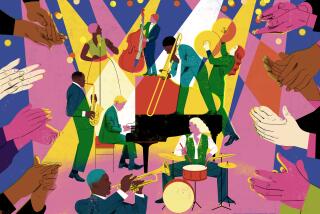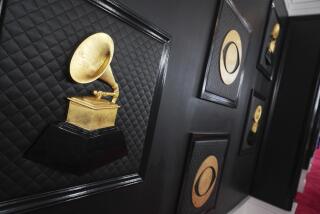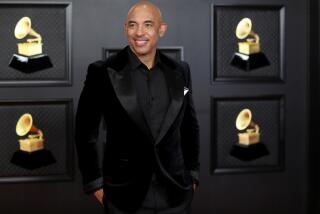What Grammys? Try these 12 places for the best live music in America
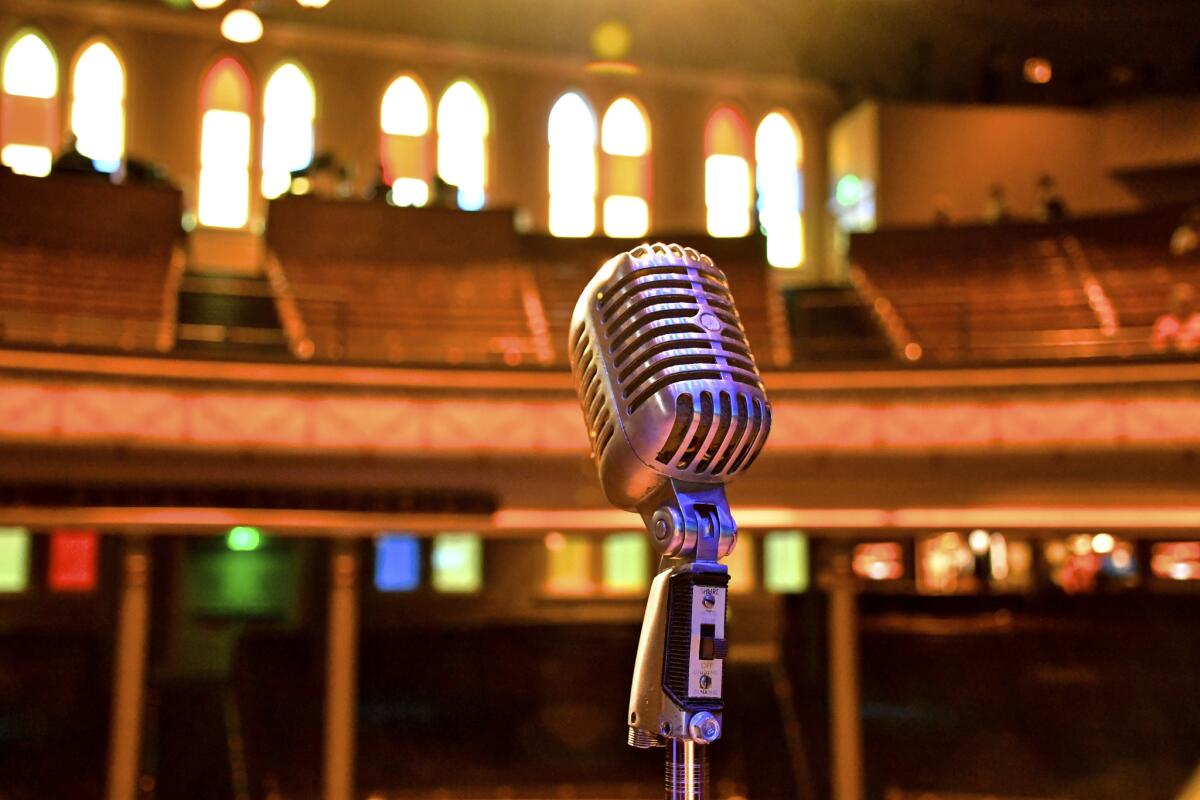
Hear that sound? It’s the rattle, hum and screech of the Grammys fast approaching (Sunday) amid ugly offstage circumstances. It might also be a reminder that A) there’s no substitute for the joy of live music; and B) you should get out of Southern California more.
I can help. I spent a good chunk of the last two years reporting stories about great American music venues, a dream assignment that took me from New York’s Carnegie Hall to Cain’s Ballroom in Tulsa, Okla.
I’ve ranked my experiences in 12 classic music spots, all outside Southern California, some well-known, some not. (I’d love to argue over the best SoCal music venues, but that would be a different story.)
Of course, your mileage and musical experiences will vary. But there’s a deep joy in roaming halls like these. You might find the green room where Hank Williams lay unconscious (OK, maybe there’s more than one of those); the classy joint where Benny Goodman anchored a groundbreaking big-band gig; the rowdy room where Sid Vicious put his fist through the wall; the stage where Taylor Swift, Emmylou Harris and Roy Acuff have played to hometown crowds; or the nook where a booth is still reserved for the late John Lee Hooker.
Along the way, I heard blues, jazz, rock, pop, chamber music and full orchestras, all musicians I’d never heard in person before. Most I liked, some I loved.
These rankings go from 12 to 1, in ascending order of the musical satisfaction they delivered. Am I comparing apples and oranges? Oh, yes. And kumquats and durians. (Tell me where else to go, and let me know your favorite venue, on twitter @mrcsreynolds.)
12. Kingston Mines, Chicago
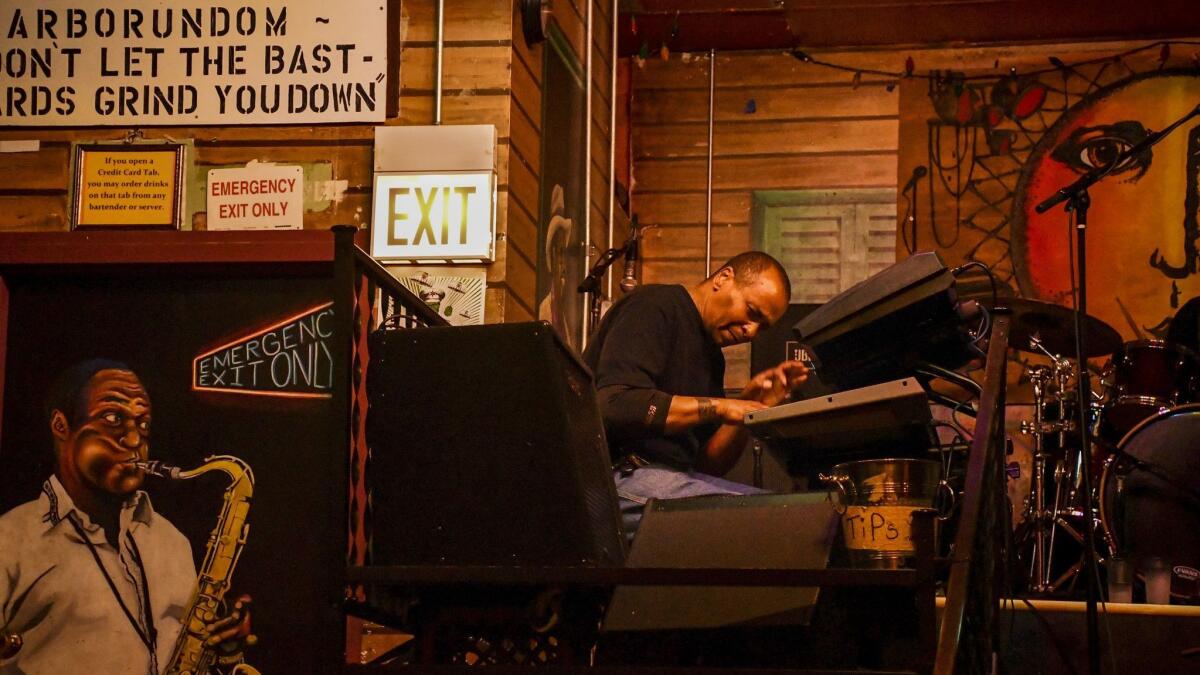
It was no fun to learn that there are no real blues bars left on Chicago’s South Side, which once was full of them. But it was a comfort to find Kingston Mines, a sprawling place on North Halsted Street that sticks to blues every night, dates back more than 50 years, draws a lot of college students, serves comfort food and doesn’t close until 4 a.m. most days.
In a different way, I loved Rosa’s Lounge, another blues club that’s as intimate as Kingston Mines is sprawling. I felt less connection to Buddy Guy’s Legends, a glitzy place downtown that’s convenient for tourists but only slightly more atmospheric than the Hilton. (Top priority on my next Chicago trip: the Green Mill, a gorgeous jazz club with a wicked vintage look. I saw it, but it was a weekday afternoon and only the jukebox was playing.) Here’s more on Kingston Mines and the others.
Who played: Corey Dennison, who did a fine, rueful version of Willie Nelson’s “Night Life.” Also Carl Weathersby, Giles Corey, Joanna Connor, Nigel Mack, Mz Peaches and her Casanovas.
11. The Salt Lake Tabernacle at Temple Square, Salt Lake City
It’s amazing what architecture and community can do for music. Salt Lake City’s Tabernacle — oldest of all the venues here — dates to the 1860s, when the Mormons were just settling in Utah. The choir and their building were essentially made for each other, and the stories of pioneer days are remarkable.
So are the details of what it takes to sing in the Tabernacle choir these days. (You need serious musical chops, receive no pay and must retire by 60.) Sit under the curved roof on a Sunday morning and you can watch the 360 singers file in like robed angels and hear the live recording of hymns and classical pieces for the choir’s radio show. It’s free. (So are tours, and the choir’s Thursday night rehearsals.) Here’s more on the choir and building.
Who played: The Tabernacle Choir, of course. (They officially stopped being the Mormon Tabernacle Choir in late 2018.) The program included “Ubi Caritas,” an Gregorian chant that works eerily well with 360 voices.
10. The Continental and C-Boy’s Heart & Soul, Austin, Texas
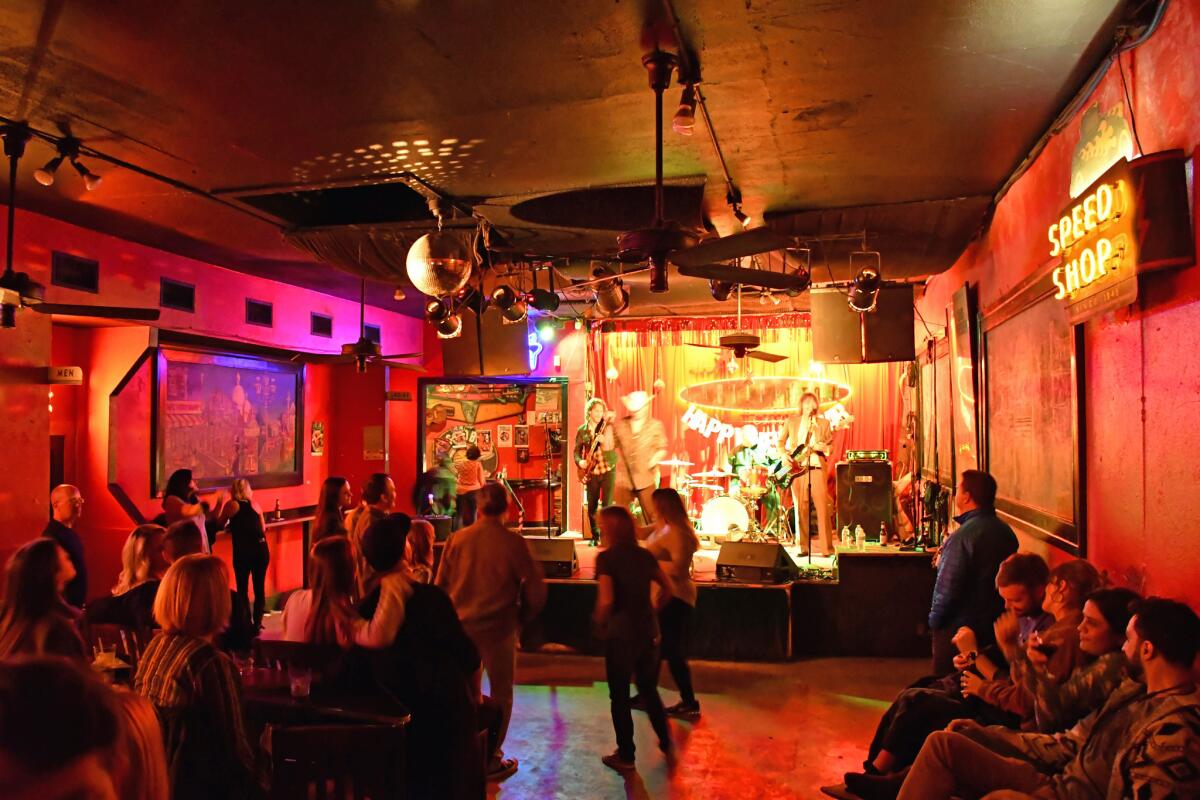
This is a sibling act. The Continental’s white and orange neon sign has been calling out to Austin rockers from South Congress Avenue for decades, with musicians including Stevie Ray Vaughan, Joe Ely and Kinky Friedman, Buck Owens, Robert Plant and Billy Gibbons.
Inside, visitors find a loud, dim, snug space with a pool and room for about 200 people. It’s cool. And so is C-Boy’s, which stands several blocks away, shares the same owner and is dedicated to soul and R&B. C-Boy’s looks as though it might be older. But no, it opened in 2014, with a vintage feel from Day 1. (It’s also a little bit swankier than the Continental.) Here’s more on the clubs and South Congress Avenue.
Who played: The Reverent Few, Mike Barfield, Rosie Flores, Whit Smith, Casper Rawls, the South Austin Moonlighters.
9. Severance Hall, Cleveland
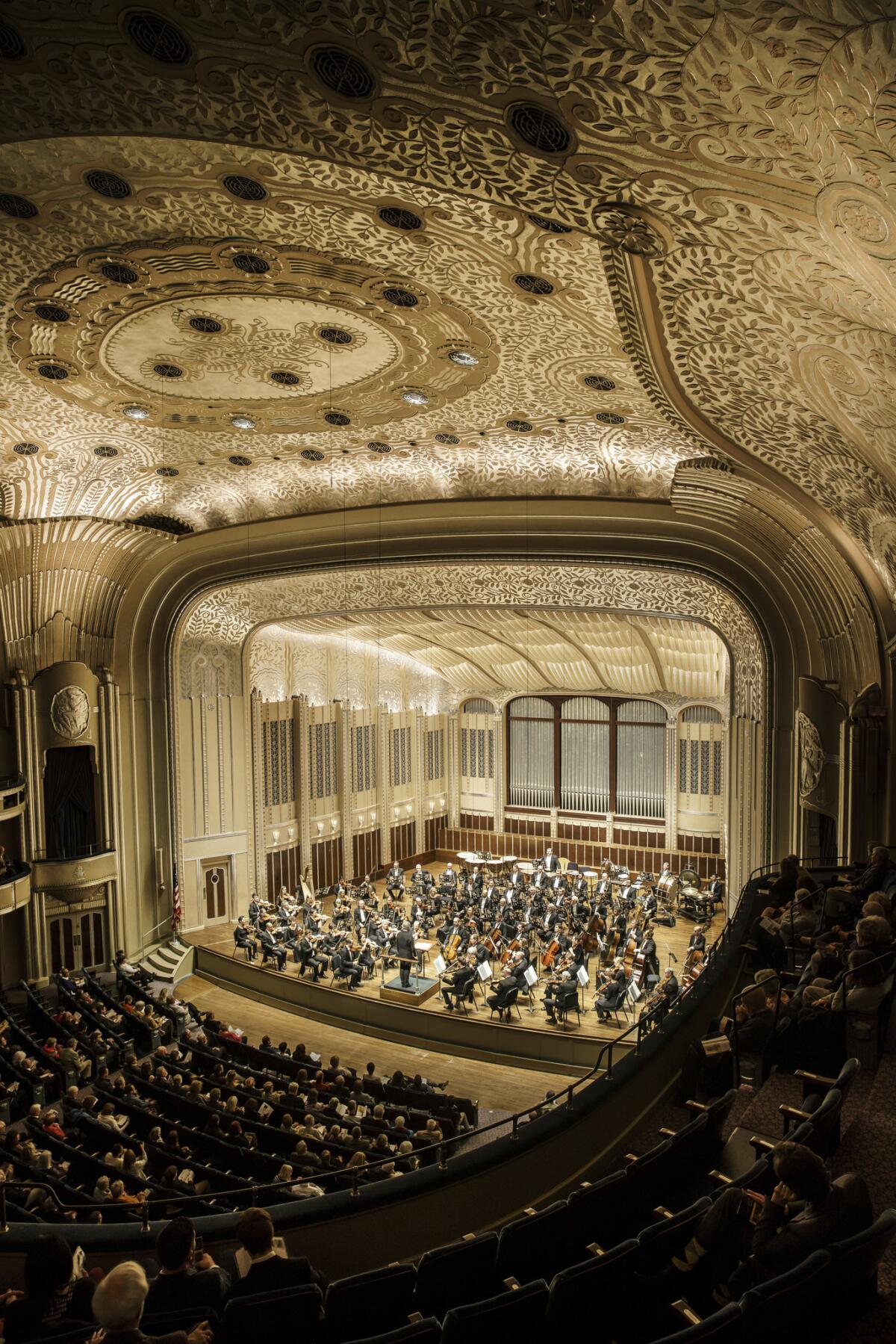
The music lovers of Cleveland got this grand old auditorium built in the early 1930s, despite a grinding Great Depression.
Then, under dictatorial conductor George Szell, the Cleveland Orchestra’s players won a reputation for excellence that put them among the top orchestras in the country, even as their hometown was being derided for its burning river and weakened economy.
Nowadays, the economy is stronger, the river is cleaner and the orchestra is as ferocious as ever. Here’s more on the orchestra, Cleveland’s tenacity and the Rock & Roll Hall of Fame.
Who played: The Cleveland Orchestra under Music Director Franz Welser-Möst; pianist Yefim Bronfman.
8. Fillmore Auditorium, San Francisco
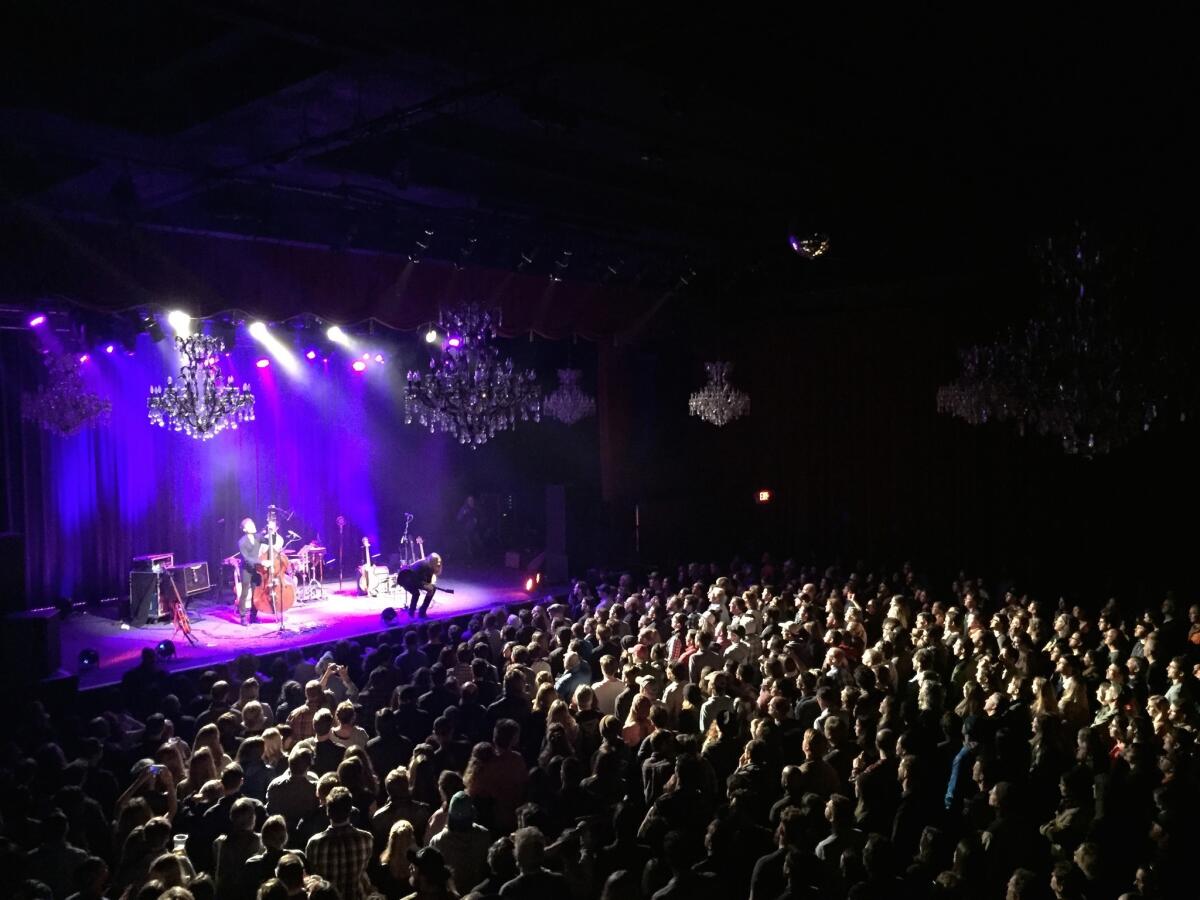
From the outside, this former skating rink might be the ugliest home to frequently sublime music I’ve ever seen. But inside, you find the chandeliers, the posters and photographs to remind you how 1960s rock came of age in this room.
I like the balcony views of the stage, but you have to show up early to grab a front-row seat there. (Don’t forget to also grab a free apple — homage to the late impresario Bill Graham.) Also, for a nightcap, there’s the much snugger Boom Boom Room across the street. The club, dedicated to funk and formerly fronted by bluesman John Lee Hooker, brings in a lot of brass bands. Here are more Fillmore photos and history.
Who played: Ibeyi, French Cuban twins with haunting vocals and percussion.
7. Red Rocks Amphitheater, outside Denver

If I were a UFO, I’d land at Red Rocks on a show night. Picture bench seating for 9,000, carved into a mountain landscape between two jutting red rock formations. The summertime music in the thin air here dates back more than a century and includes a Jimi Hendrix show in the ’60s and a U2 gig in 1983 that became the concert film “U2 Live at Red Rocks: Under a Blood Red Sky.”
This is the only place on my list that doubles as a hiking and workout venue, and because it’s 6,450 feet above stage, the stage crew keeps oxygen canisters handy in case a winded performer needs to suck air. Here’s more on the amphitheater.
Who played: The Decemberists, who played “Ben Franklin’s Song,” a hilarious “Hamilton” outtake by Lin-Manuel Miranda. Also Phantogram.
6. Spotted Cat, New Orleans

This jazz club is just right, neither too big nor too small, beloved by locals and visitors, sitting in the lively mix of restaurants and clubs along Frenchmen Street in the Marigny District.
To appreciate it even more, compare your experience with Preservation Hall in the French Quarter, where the musicians can be wonderfully grizzled and formidable, but your ticket buys you a seat for one 45-minute set and no alcohol is served. The hall is very much a tourist thing, and I’m glad for the visitor dollars that make their way to the musicians. But the Spotted Cat is a cooler hang.
Who played: Meschiya Lake & The Little Big Horns.
5. Ryman Auditorium, Nashville

At first this was a stage for preachers. Then came the Grand Ole Opry. Then came near-oblivion, before Emmylou Harris and others helped revive the quirky building. Besides a full calendar of shows, the Ryman Auditorium offers tours, including an onstage photo op. It’s kind of cheesy, but it’s also quintessentially Nashville. Also, the honky-tonks of Lower Broadway are close at hand. Here are more photos and history.
Who played: Whitey Morgan and the 78’s, who roused the house with “Honky Tonk Hell.”
4. Cain’s Ballroom, Tulsa
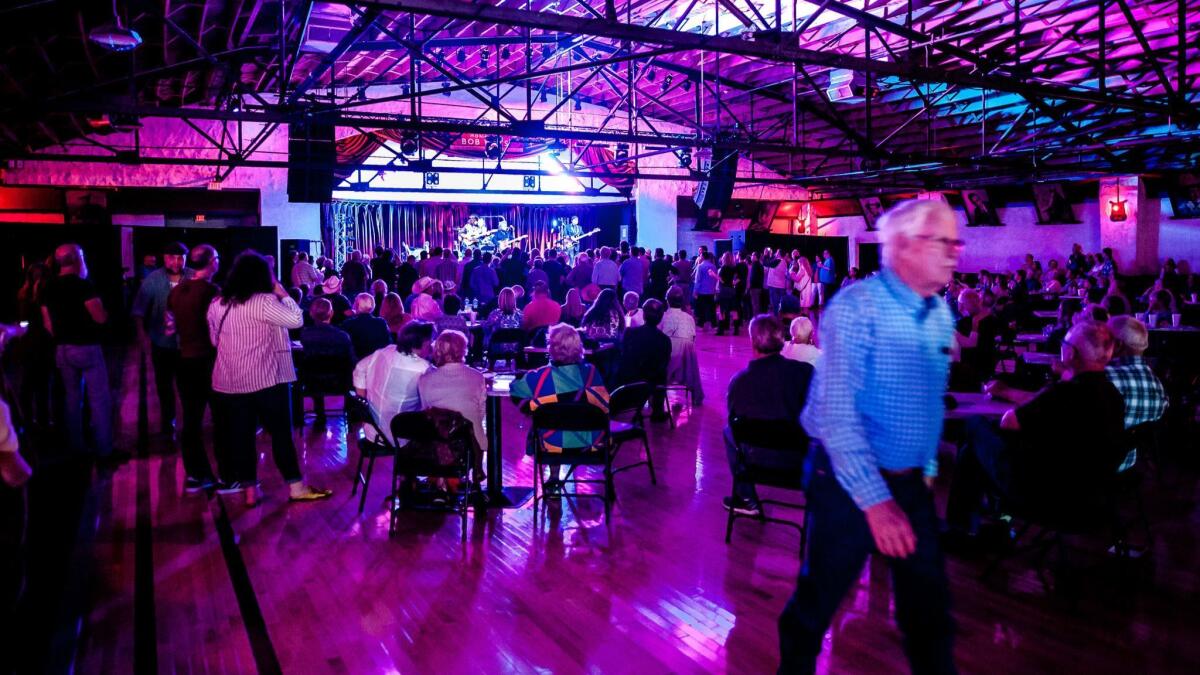
Maybe you haven’t heard of this one. It’s full of surprises.
To start with, Cain’s was built as an auto garage in 1924, and despite the classic photos of country music heroes that line the walls, it still kind of looks like a converted auto garage. In the Dustbowl 1930s, it was headquarters for Bob Wills and the Texas Playboys, whose far-reaching western swing broadcasts brought comfort to countless Oklahomans looking for work.
In the 1970s, after decades of rowdy country shows, it was born again as a rock venue, and hosted the Sex Pistols on their short, lone U.S. tour in 1978. (The show went poorly and Sid Vicious punched the wall; the damage has been preserved and framed.)
The shows continue, country to rap. Here’s more about Cain‘s, and don’t miss the Woody Guthrie Center a few blocks away, or the startling number of Art Deco buildings downtown. Also, OKPOP (the Oklahoma Museum of Popular Culture) is due to rise soon across the street from Cain’s.
Who played: Marty Stuart and His Fabulous Superlatives, who dawdled and then raced through a festive “Orange Blossom Special.” Also MisterWives.
3. Royal Street, New Orleans

Buskers needed a place on this list. And there’s no American place more attuned to street music than New Orleans, with its history of marching bands and jazz funerals.
Royal Street, in the French Quarter, is a particularly prime street for traditional jazz players, and for years the street’s leading act has been clarinetist Doreen Ketchens, who was classically trained and has played for four presidents. She and her band set up in front of Rouses Market at Royal and St. Peter streets most weekend afternoons and evenings.
Who played: Doreen Ketchens, family and friends, who made fast, happy work of Louis Armstrong’s “Royal Garden Blues.”
2. Carnegie Hall, New York
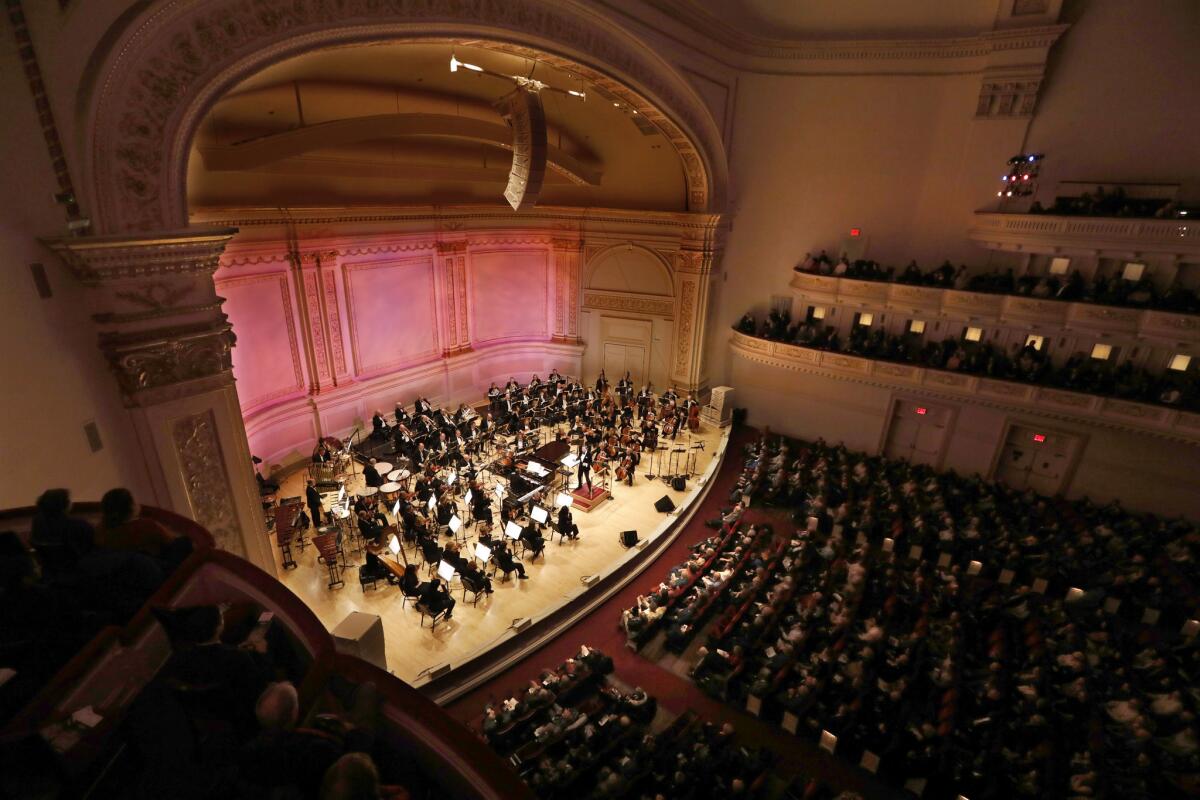
Here, more than any other place on this list, listeners and performers alike think hard about who has come before them. It goes back to 1891, when some guy named Tchaikovsky took the stage on opening night to conduct his own work, and just about everyone who’s anyone has passed through Carnegie Hall since then: Benny Goodman (1938), Leonard Bernstein (nearly 450 performances from 1943 to 1990), the Beatles (1964), Judy Garland (1961).
The hall’s director of archives estimates that 50,000 shows have been staged in the building, which might make this the most frequently trod stage on Earth. Besides the 2,804-seat main auditorium that’s named for Isaac Stern, there is the 268-seat Weill Recital Hall and 599-seat Zankel Hall, a more contemporary space downstairs for pop, jazz and world music performances. More pictures and history here. Tours are offered six days a week, fall through spring.
Who played: Tine Thing Helseth, a trumpeter who also offered vocals on an a cappella encore of the old standard “Smile.” Also the Orpheus Chamber Orchestra, New York Pops, Capathia Jenkins, James Monroe Iglehart, Ruthie Foster, North Mississippi Allstars.
1. Station Inn, Nashville
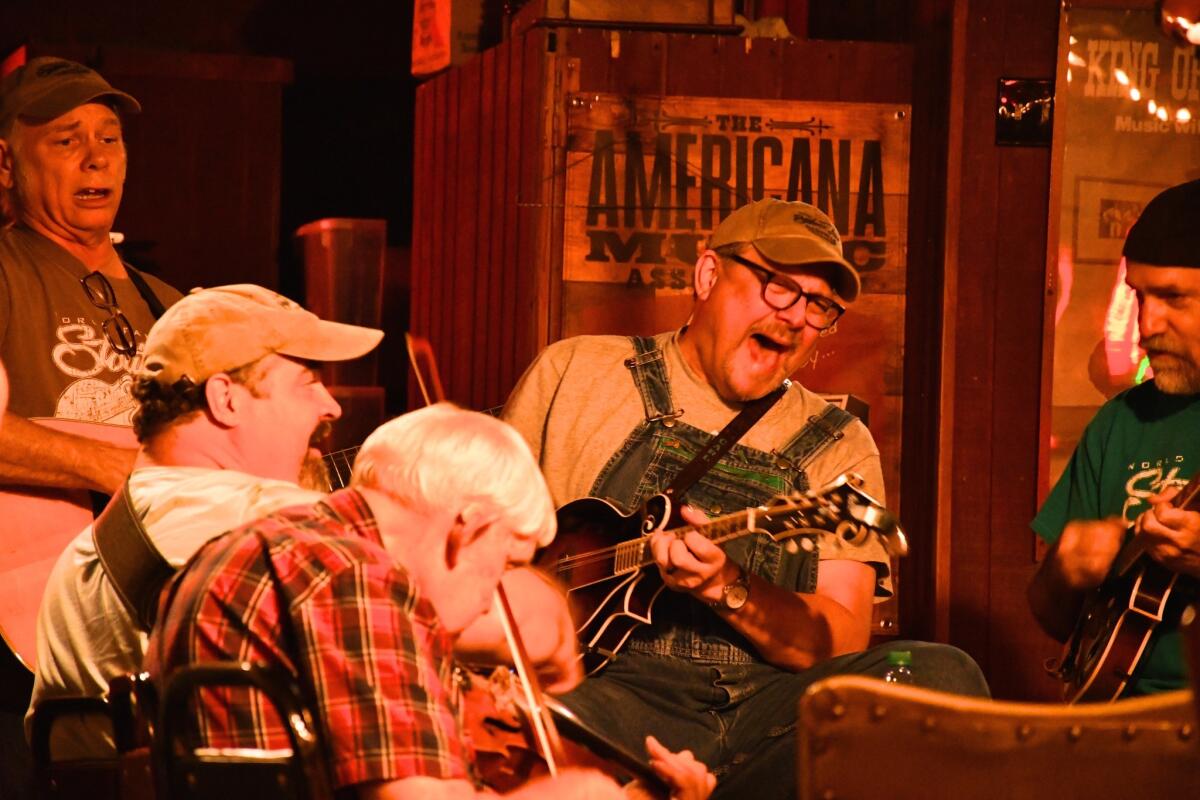
It’s not the Grand Ole Opry and it’s not a gleaming new arena. It’s a modest club in the Gulch neighborhood whose stage is devoted mostly to Americana. The owner, J.T. Gray, plays bass.
On Sunday nights, the Station Inn does a bluegrass jam, no cover charge. Skill levels are high. Overalls are worn. If you’re a visiting musician, you sidle up to the regulars, demonstrate your chops and hope to be invited into the middle of some down-home Americana, even if you’re not from here.
The night I visited, the jam’s local regulars were joined by three banjo players: Taylor Pfeiffer, 19 and fresh from Australia; Mikael Jonassen, 29, from Norway; and Yuki Yajima, 23, from Japan. They could play.
When the leader asked Yajima to call the tune, it was clear that Yajima had very few English words in his vocabulary. But he was able to find three. “Foggy Mountain Breakdown,” he said.
The four-continent band launched. The music raced along like a runaway wagon. It was a global moment, an American moment, a musical moment.
Who played: A bunch of amateurs. Great ones.
More to Read
Sign up for The Wild
We’ll help you find the best places to hike, bike and run, as well as the perfect silent spots for meditation and yoga.
You may occasionally receive promotional content from the Los Angeles Times.
